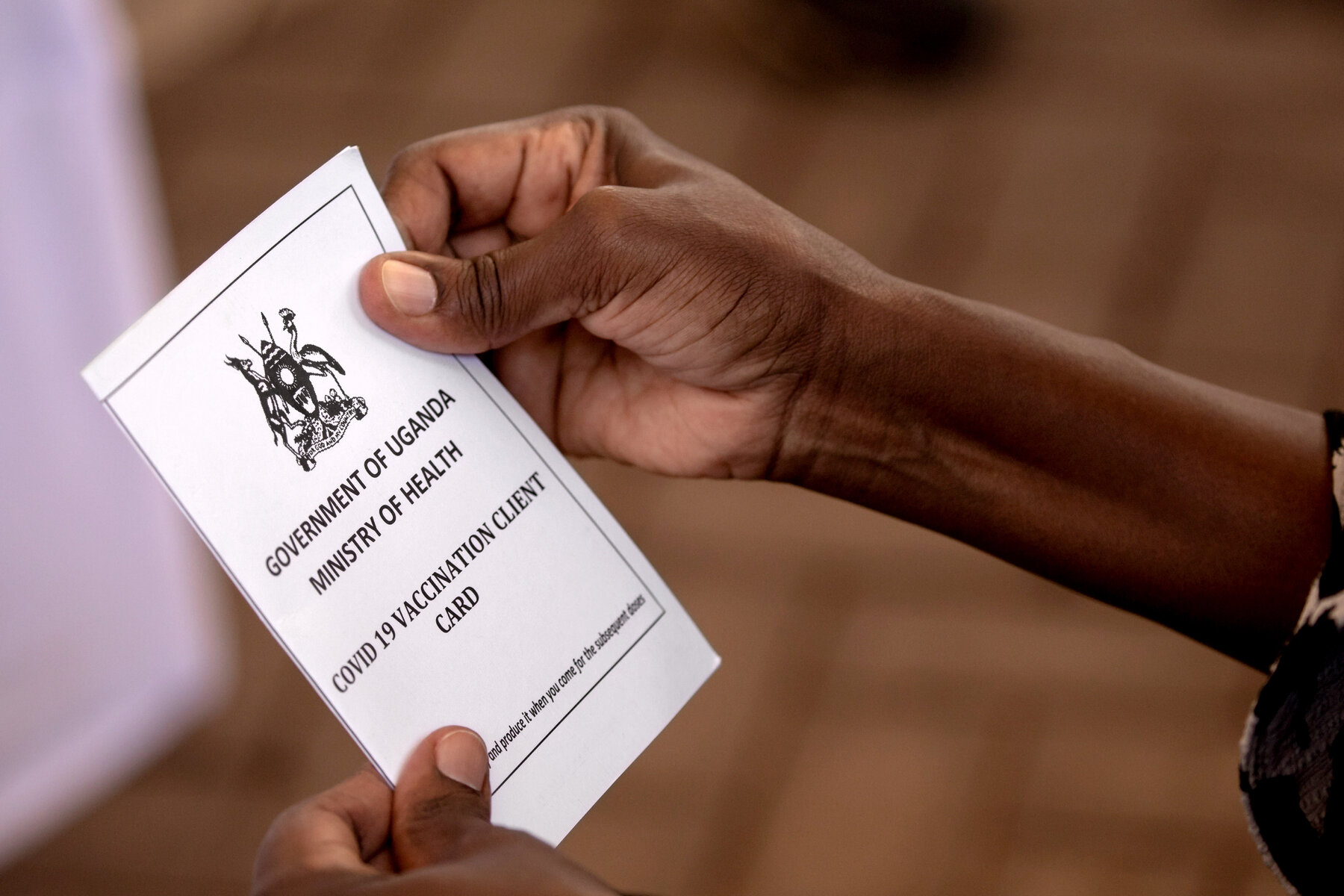If all vaccines offer same protection, why are some Ugandans still pessimistic?

According to data from World Health Organisation, about 415,000 Ugandans have been fully vaccinated against Covid 19.
What you need to know:
- Apart from Johnson and Johnson, Uganda has received several doses of AstraZeneca, Mordena, Pfizer and Sinovac vaccines but vaccination against Covid-19 is still low, with many still waiting for more advanced vaccines, writes Joyce Aheebwa.
Aliyah Adam took her first Covid-19 vaccination jab in June 2021. Then, it was mandatory for all frontline essential workers to be vaccinated.
“I got the AstraZeneca vaccine jab, the only available one in Uganda then, from Victoria University,” the 20- year-old journalist shares.
Her side effects were high fever, a bad headache and general body weakness for about two days.
Adam then took her second jab at Kampala Capital City Authority clinic after the recommended eight weeks and did not get any side effects at all.
“Perhaps because the reaction happened the very first time,” she says.
Vaccines available in Uganda
Apart from the Johnson and Johnson, a one jab vaccine, Uganda has so far received about 5,129, 763 doses of vaccines through donations.
These include 1.64 million doses of the Pfizer vaccine and 647,000 doses of the Moderna from the USA. About 300,000 doses of Sinovac vaccine were donated by China while 286,080 doses of AstraZeneca were received from Norway.
Of the received doses, 2.1 million doses have been utilised countrywide.
According to Dr Richard Idro, the president, Uganda Medical Association (UMA), AstraZeneca Oxford vaccine has been the most used in the country, embraced by most frontline workers.
“As a matter of fact, most of us in the health sector received AstraZeneca. Let the public take it from us that it is safe,” says Dr Idro.
Sinovac was given to teachers with the objective of having them ready in time for the reopening of the education sector. Sinovac has an interval of only four weeks between the first and the second jab.
“Moderna vaccine will be distributed across the country apart from Wakiso, Kampala and Mukono. Moderna is also a two dose jab with an interval time between the first and the second dose of four weeks,” says Dr Idro.
Resisting AZ
In March, government rolled out vaccination against Covid-19 with health care providers, security personnel, teachers, journalists, persons aged 50 years and above and those with underlying health conditions set to benefit from phase one of vaccination.
However, months later, many Ugandans were reportedly hesitant to get vaccinated, especially using AstraZenaca with most claiming it is less effective.
Confirmation made on June 30, 2021 by Dr Warren Naamara, the Executive Director of the State House Health Monitoring Unit, of fake vaccines used between May 15 and June 17 on about 800 people, fuelled the already burning fire.
But Emmanuel Ainebyona, the Ministry of Health spokesperson was quick to dismiss the allegations, saying vaccines administered so far are very authentic and the rumours are unfounded only being spread by anti-vaxxers and perhaps competitors of AstraZeneca Oxford vaccine.
Just like Ainebyona, Umaru Ssenyonjo, an administrative manager at Educate an Orphan Uganda says he took time to carry out research about AstraZeneca.
“I took two AstraZeneca jabs I experienced very mild side effects. A little fever and a little bit of headache for a few hours and that was it. By the time I took the first jab, AZ was the only type so far received in the country so there was no choice then for me,” says Ssenyonjo.
The 28-year-old took the first jab when the second wave Covid-19 infections was at its peak.
“I just felt like taking the jab would protect me,” Ssenyonjo adds.
Waiting for the best?
While some have settled for what is available, many have flocked bars and other entertainment centres to get their first jabs of Pfizer vaccine, another two jab vaccine with a three-week interval between the first and the second jabs.
“I got Pfizer by sheer luck. I went to the centre prepared to get AstraZeneca but the doctor told us we were receiving Pfizer instead,” Yasmin Ahmed, a lawyer says.
Other than pain on the arm where the vaccine was administered, she did not experience any side effects. “However, my mother and aunt with whom I had gone to take the jab experienced side effects. A little fever and weakness,” Ahmed adds.
Idro emphasises that the best vaccine is the one within your reach, none is better than the other. “The only uniqueness Johnson and Johnson brings to the table is the one injection as opposed to two from all the other types of vaccine. Other than that, it offers the very same protection like the others,” Dr Idro says.
Administering of the vaccines
According to Dr Idro, Ugandans are encouraged to take the same vaccine for both jabs.
“The only known positive results are from mixing of AstraZeneca and Pfizer. One can take a second dose of Pfizer when the first was AstraZeneca,” he adds.
Moderna can not be mixed with any other vaccine.
About the time between the first and the second jab, Ainebyona says there is no effects for when one takes the first jab and then goes beyond the recommended time to get the second, except for reducing on the efficiency of the vaccine. He advises everyone to vaccinate according to schedule.
Challenge
Ainebyona says as a country, the availability of vaccines in the quantity required to help reopen the economy has been a big challenge.
“We are not at luxury to wait for one type of vaccine and it has not been possible to get only one type because of factors such as the global hoarding,” Ainebyona says.
About 700 more doses of Sinovac are expect to arrive soon, according to Ainebyona.
Overview
What are the ingredients in a vaccine?
Vaccines contain tiny fragments of the disease-causing organism or the blueprints for making the tiny fragments. They also contain other ingredients to keep the vaccine safe and effective. These latter ingredients are included in most vaccines and have been used for decades in billions of doses of vaccine.
Each vaccine component serves a specific purpose, and each ingredient is tested in the manufacturing process. All ingredients are tested for safety.
Antigen
All vaccines contain an active component (the antigen) which generates an immune response, or the blueprint for making the active component. The antigen may be a small part of the disease-causing organism, like a protein or sugar, or it may be the whole organism in a weakened or inactive form.
Preservatives
Preservatives prevent the vaccine from becoming contaminated once the vial has been opened, if it will be used for vaccinating more than one person. Some vaccines don’t have preservatives because they are stored in one-dose vials and are discarded after the single dose is administered. The most commonly used preservative is 2-phenoxyethanol. It has been used for many years in a number of vaccines, is used in a range of baby care products and is safe for use in vaccines, as it has little toxicity in humans.
Stabilizers
Stabilizers prevent chemical reactions from occurring within the vaccine and keep the vaccine components from sticking to the vaccine vial.
Stabilizers can be sugars (lactose, sucrose), amino acids (glycine), gelatin, and proteins (recombinant human albumin, derived from yeast).
Surfactants
Surfactants keep all the ingredients in the vaccine blended together. They prevent settling and clumping of elements that are in the liquid form of the vaccine. They are also often used in foods like ice cream.
Residuals
Residuals are tiny amounts of various substances used during manufacturing or production of vaccines that are not active ingredients in the completed vaccine. Substances will vary depending on the manufacturing process used and may include egg proteins, yeast or antibiotics. Residual traces of these substances which may be present in a vaccine are in such small quantities that they need to be measured as parts per million or parts per billion.
Diluent
A diluent is a liquid used to dilute a vaccine to the correct concentration immediately prior to use. The most commonly used diluent is sterile water.





